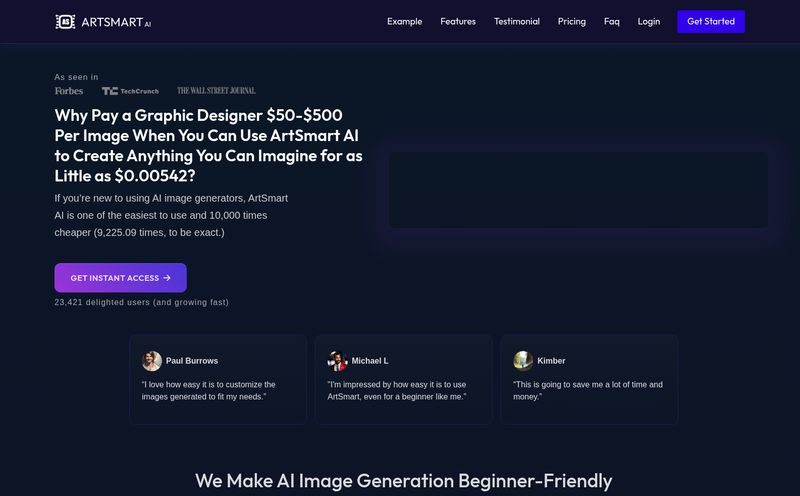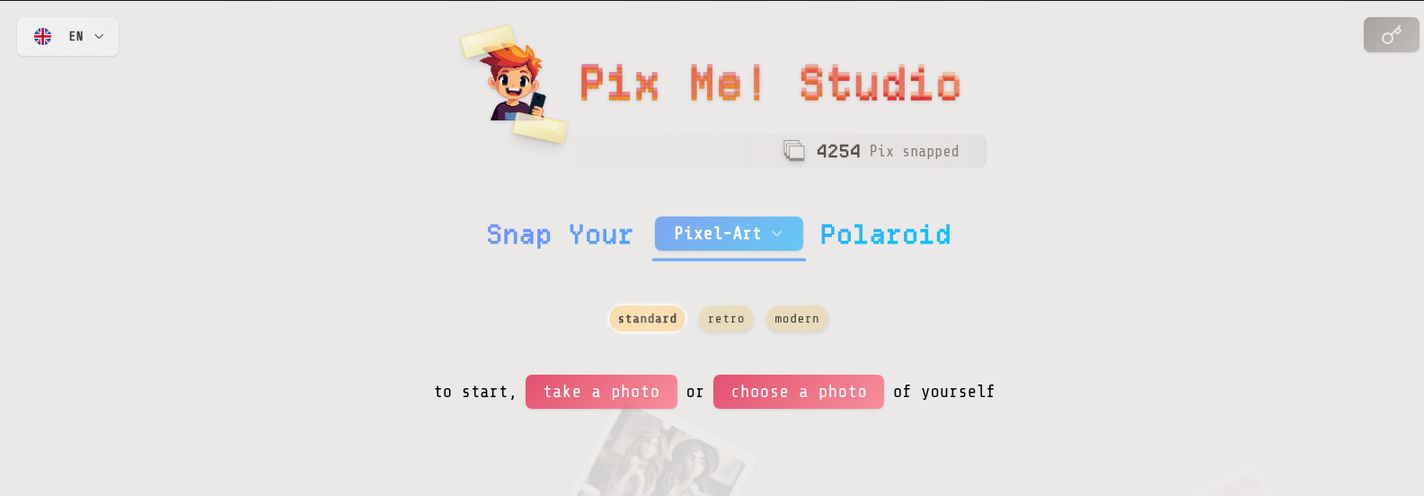If you've been in the content or marketing game for any length of time, you know the pain. That perfect stock photo that’s almost right, but there’s a distracting water bottle in the corner. Or that team photo where you wish you could just add a festive hat to someone for the holiday newsletter. For years, the answer was always the same: fire up the beast. You know the one I'm talking about. The software that costs a small fortune and has more buttons and panels than the cockpit of a 747.
I’ve spent more hours than I care to admit watching tutorials on how to properly use a clone stamp tool, only to end up with a blurry smudge that screams “I did this myself, and poorly.” It’s a rite of passage, I guess. But what if it didn’t have to be?
The whole AI boom is changing things, and fast. We’re seeing it in writing, in code, and now, it's coming for our pixels. I've been keeping a close eye on these new generative AI image tools, and I recently stumbled upon one with a brilliantly simple name: Paint by Text. The promise? Ditch the layers, masks, and a million confusing tools. Just tell the AI what you want. I was skeptical, but also… incredibly intrigued.
So What Exactly Is Paint by Text?
Imagine you have a photo editor that you can talk to. Not with your voice (not yet, anyway), but with your keyboard. That's Paint by Text in a nutshell. It's a web-based tool built on the idea of natural language photo editing. You upload an image, and instead of clicking on a “healing brush,” you simply type in a command like “remove the person on the left” or “add a small red boat on the water.”
It's like having a tiny, incredibly fast, and slightly unpredictable artist living in your browser. You give the instruction, and the AI model gets to work, re-interpreting that part of the image based on your command. It's not just covering things up; it's generating new pixels to seamlessly fill the space. In theory, anyway.

Visit Paint by Text
My First Run: The Good, The Fast, and The Fun
I had to take it for a spin. I grabbed a simple landscape photo of a beach. My first command was ambitious: “add a classic wooden lighthouse on the cliff.” I hit enter and held my breath. A few seconds later… there it was. A lighthouse. It wasn’t perfect, the lighting was a little off, but it was undeniably a lighthouse, and it was sitting right where I wanted it.
This is where the magic really hit me. The simplicity is astounding. There’s no learning curve. If you can write an email, you can edit a photo. This is a massive win for anyone who doesn't have the time or desire to become a graphic design pro. For quick content creation, like making a featured image for a blog post or sprucing up a social media graphic, this is ridiculously fast.
Removing objects is just as easy. I took another photo with a coffee cup on a desk and typed “remove the coffee cup.” Poof. Gone. The AI did a pretty decent job of recreating the wood grain of the desk underneath. It felt like a digital magic trick.
But It’s Not All Sunshine and AI Rainbows
Okay, before you uninstall your entire Adobe suite, let's ground ourselves. This tool is cool, but it has its quirks. The biggest thing to understand is that its output is entirely dependent on two things: the quality of the AI model and the quality of your prompt.
The Art of AI Whispering
You can’t just be vague. I tried “make the sky more interesting.” The result was… weird. A sort of swirly, painterly mess that didn’t match the photo at all. But when I changed the prompt to “add fluffy white clouds to the blue sky,” the result was a thousand times better. You have to be specific. Think like you’re describing something to an artist who has never seen the object before. This is what people are calling “prompt engineering,” and it’s a skill in itself.
It's a Bit of a One-Trick Pony
Right now, Paint by Text does one thing: it adds or removes objects. Don’t go looking for color correction sliders, font tools, or resizing options. Its functionality is very focused. Some might see this as a limitation, but I actually see it as a strength. It’s not trying to be everything to everyone. It’s a specialized tool, a scalpel rather than a Swiss Army knife. If you need to do more complex work, you'll still need your traditional software. But for that one specific task? It’s a contender.
So, Who Is This Tool Really For?
I don’t see professional photographers or high-end retouchers using this for their client work. Not yet. The control and precision just aren’t there.
But for the rest of us? The bloggers, the social media managers, the small business owners, the marketing generalists who wear a dozen different hats? This could be a game-changer. It’s for people who value speed and efficiency over pixel-perfect precision. It’s for creating a quick visual for a campaign, removing a photobomber from an event picture, or just having a bit of creative fun without the technical headache.
"It democratizes a small but significant piece of the creative process. You no longer need to be a 'Photoshop person' to change the reality of an image."
What's the Damage? A Look at Pricing
Here’s the interesting part. As I'm writing this article, there's no clear pricing information available on their site. The pricing page seems to be a work in progress. For now, it appears you can just hop on and use it for free. How long will that last? Who knows. I wouldn't be surprised to see a credit-based system or a simple subscription model appear down the line, similar to other AI tools. My advice? Go try it out now while it's definitely free.
Frequently Asked Questions About Paint by Text
- 1. How does Paint by Text actually work?
- It uses a type of AI called a generative model. When you type a command, the AI analyzes your text and the selected area of the image. It then generates new pixels to either replace the existing ones (for removal) or add something new that matches your description and the surrounding context.
- 2. Is Paint by Text a free tool?
- At the moment, yes, it appears to be free to use. However, the company hasn't released official pricing, so this could change in the future. It's best to check their website for the most current information.
- 3. Can it handle really complex edits?
- Not really. It’s best for simpler tasks like removing a single object from a clean background or adding a well-defined item. Trying to, say, change a person's entire outfit or perform detailed facial retouching is probably beyond its current capabilities.
- 4. What's the secret to writing good prompts?
- Be specific and descriptive! Instead of “add a car,” try “add a shiny red sports car.” Instead of “remove the thing,” try “remove the blue trash can next to the bench.” The more detail you give the AI, the better your result will be.
- 5. Is this better than Adobe Photoshop's Generative Fill?
- It's not really a direct comparison of 'better'. Photoshop is a massive professional suite with Generative Fill as one of its many features. Paint by Text is a lightweight, super-accessible web tool that does only this one thing. It's simpler and faster for its specific purpose, but Photoshop is infinitely more powerful overall.
My Final Thoughts on Painting with Words
So, is Paint by Text going to put graphic designers out of a job? No, of course not. But that was never the point. What it does, and what tools like it represent, is a shift in accessibility.
It removes a huge technical barrier and puts a powerful creative ability into the hands of anyone who can type a sentence. It’s fast, it’s fun, and while it's not perfect, its impressive. It’s a fantastic tool for the right kind of task, and a fascinating glimpse into a future where our creativity is only limited by our ability to describe what we imagine. I, for one, am excited to see where it goes. Now if you'll excuse me, I have a picture of my cat that I need to add a tiny top hat to.



